Potřebujeme váš souhlas k využití jednotlivých dat, aby se vám mimo jiné mohly ukazovat informace týkající se vašich zájmů. Souhlas udělíte kliknutím na tlačítko „OK“.
ASTM E2092-13
Standard Test Method for Distortion Temperature in Three-Point Bending by Thermomechanical Analysis
Automaticky přeložený název:
Standardní zkušební metoda pro zkreslení Teplota ve tříbodovém ohýbání termomechanická analýza
NORMA vydána dne 1.9.2013
Informace o normě:
Označení normy: ASTM E2092-13
Poznámka: NEPLATNÁ
Datum vydání normy: 1.9.2013
Kód zboží: NS-44262
Počet stran: 5
Přibližná hmotnost: 15 g (0.03 liber)
Země: Americká technická norma
Kategorie: Technické normy ASTM
Kategorie - podobné normy:
Anotace textu normy ASTM E2092-13 :
Keywords:
deflection, deflection temperature under load, heat distortion temperature, strain, stress, temperature, thermomechanical analysis (TMA), ICS Number Code 83.080.01 (Plastics in general)
Doplňující informace
| Significance and Use | ||||||||||||
|
5.1 Data obtained by this test method shall not be used to predict the behavior of materials at elevated temperatures except in applications in which the conditions of time, temperature, method of loading, and stress are similar to those specified in the test. 5.2 This standard is particularly suited for quality control and development work. The data are not intended for use in design or predicting endurance at elevated temperatures. |
||||||||||||
| 1. Scope | ||||||||||||
|
1.1 This test method describes the determination of the temperature at which the specific modulus of a test specimen is realized by deflection in three-point bending. This temperature is identified as the distortion temperature. The distortion temperature is that temperature at which a test specimen of defined geometry deforms to a level of strain under applied stress of 0.455 MPa (66 psi) (Method A) and 1.82 MPa (264 psi) (Method B) equivalent to those used in Test Method D648. The test may be performed over the range of temperature from ambient to 300°C. 1.2 The values stated in SI units
are to be regarded as standard. No other units of measurement are
included in this standard.
1.3 This standard does not purport to address all of the safety problems, if any, associated with its use. It is the responsibility of the user of this standard to establish appropriate safety and health practices and to determine the applicability of regulatory limitations prior to use. 1.4 There is no ISO standard equivalent to this test method. |
||||||||||||
| 2. Referenced Documents | ||||||||||||
|
Podobné normy:
Historická
1.8.2010
Historická
1.4.2010
Historická
1.9.2009
Historická
1.11.2013
Historická
1.7.2010
Historická
1.3.2007
Odebírejte informace o nově vydaných normách ZDARMA:
Chcete pravidelně odebírat informace o nově vycházejících normách z celého světa a to zcela zdarma?
Přihlašte se k odběru. Vše je velice jednoduché a absolutně ZDARMA.
Na výběr máte vydavatele z celého světa.


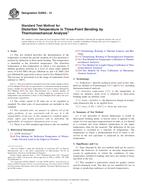
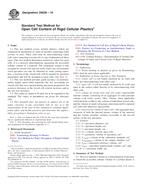 ASTM D6226-10
ASTM D6226-10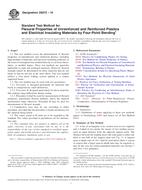 ASTM D6272-10
ASTM D6272-10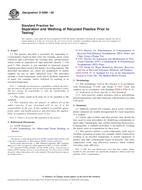 ASTM D6288-09
ASTM D6288-09 ASTM D6290-13
ASTM D6290-13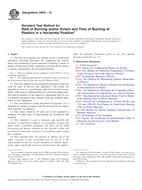 ASTM D635-10
ASTM D635-10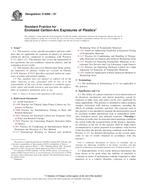 ASTM D6360-07
ASTM D6360-07
 Cookies
Cookies
